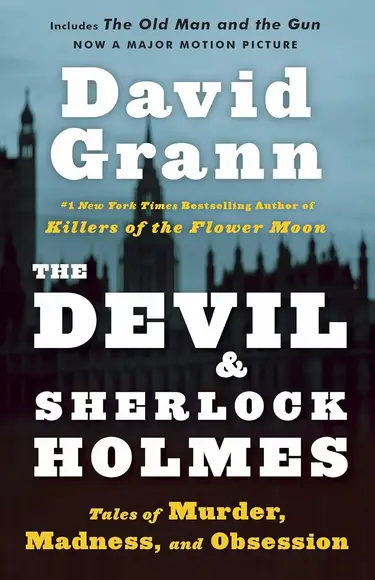The Devil and Sherlock Holmes

The initial chapter "The Strange Death of a Holmes Fanatic" involves the mysterious murder or suicide of the preëminent Arthur Conan Doyle scholar, Richard Green. He anticipated examining the remaining trove of Doyle's estate, which was to be bequeathed to the British Library by his youngest daughter in her will. However, he discovered instead somehow the trove ended up on Christies' auction block forever slipping out of his grasp and his dream of writing the definitive Doyle biography sliding out of his reach.
The circumstances surrounding Green's death were odd. He was found garrotted with a shoelace in his home. No note, but the message on his answering machine changed from his voice to an American accent. A wooden spoon was also found near his body, which inspectors chalked up to an implement that helped him twist the lace around his neck and secure it long enough for him to pass away.
Prior to his untimely death Green had told several people of his fears of being done away with.
The author travelled to England and Scotland to interview members of different Holmes societies. One professor of history in Scotland who was actively trying to keep the investigation open and believed Green to be a victim of murder told Grann he knew the name of the American Green was paranoid about. Grann went to the Washington, D.C. area to interview the American, who insisted on anonymity. He turned out to be just as much a lifelong fan of Holmes as Green and explained the will changed to divide the Doyle estate among several nephews, who then brought the Doyle correspondence, unpublished papers, et. al. to the auctioneer. Green had become a nuissance to Doyle's youngest and/or she was talked out of simply handing it over to the British Library.
Long story short, the British Library was the high bidder on the lot, so if Green had been a bit more patient he would have had his primary sources to complete his life's work.
Or, as Grann concludes, perhaps he did meet with a darker fate, but that some mysteries are never solved.
And that's just one essay in the collection. The next is a well researched and presented piece on how a man was executed in Texas for an arson that claimed the lives of his three young children despite expert scientific advice and similar case studies reaching Governor Perry in time for a stay. The first definitive evidence of the state executing an innocent man.
Another essay tracks the life of Frederic Bourdin or "the chameleon" who could change his appearance at will, even at one point convincing authorities he was a 14 year old orphan.
But there's much more and I'm savouring it chapter by chapter.